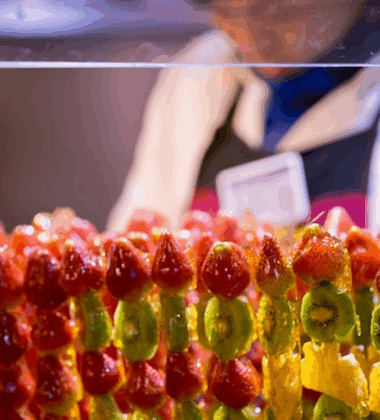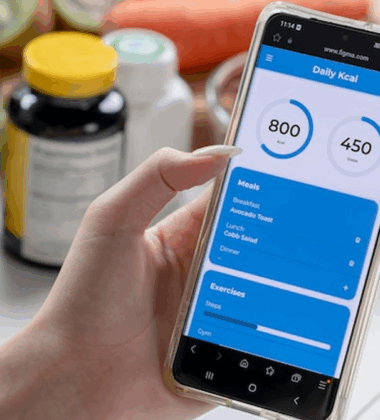Understanding how we perceive flavor goes beyond taste buds—it’s a journey into the brain. The science of neurogastronomy explores how the brain constructs our experience of taste, drawing from sensory cues like aroma, texture, temperature, sound, and even memory. As the food and beverage industry evolves, neurogastronomy is emerging as a powerful tool for chefs, product developers, and food tech innovators who want to design more compelling, satisfying, and emotionally resonant food experiences.
This article explores how neurogastronomy works, why it’s reshaping the future of taste, and how forward-thinking brands are leveraging it to innovate at global expos and beyond.
What Is Neurogastronomy?
Neurogastronomy is the scientific study of how the brain perceives flavor by integrating signals from all five senses—plus cognition and memory. It’s not just about what’s on the tongue; it’s about how the brain interprets a multisensory experience as “taste.”
The term was coined by Dr. Gordon Shepherd, a neuroscientist at Yale University, who revealed that what we commonly call “flavor” is actually constructed by the brain, not just tasted by the tongue. Smell, sight, texture, temperature, and even expectations all shape how food tastes.
How the Brain Creates Flavor
Flavor perception is a brain-driven process that combines:
- Olfaction (smell): Up to 80% of flavor is determined by smell. Aroma molecules enter the nose retronasally (from the mouth) during chewing.
- Gustation (taste): The tongue detects five basic tastes—sweet, salty, sour, bitter, umami.
- Trigeminal sense: This includes texture, spiciness, cooling (like menthol), and astringency—sensations detected via the trigeminal nerve.
- Visual cues: Color and plating influence how we expect something to taste.
- Sound: The crunch of a chip or fizz of a soda adds to perceived freshness or satisfaction.
- Memory and emotion: The brain ties taste to past experiences, cultural associations, and emotional states.
Together, these inputs are synthesized by the brain to produce the final experience of flavor.
Why Neurogastronomy Matters for Food Innovators
In an increasingly competitive F&B landscape, understanding how the brain creates flavor enables professionals to design food that resonates deeper with consumers.
1. Improved Product Development
Food technologists can tailor ingredients and texture to evoke specific sensory profiles that enhance satisfaction—whether for luxury indulgence or healthy alternatives.
Example: Adjusting mouthfeel and aroma in plant-based products to mimic traditional meat experiences more accurately.
2. Cognitive Flavor Engineering
By manipulating sensory elements, brands can create foods that “taste” better without adding sugar, salt, or fat—an important advantage for health-focused innovation.
Example: Using bright colors and citrus aromas to enhance the perception of sweetness in low-sugar beverages.
3. Personalized Eating Experiences
Neurogastronomy opens doors to personalized nutrition—crafting meals based on how individuals respond neurologically to different flavor profiles.
This is particularly useful for:
- Elderly populations with reduced taste sensitivity
- People undergoing medical treatments (e.g., chemotherapy)
- Individuals with sensory processing differences
Neurogastronomy in Action at Food Expos
Major food expos and trade shows are becoming live laboratories for neurogastronomy. Brands and chefs are showcasing interactive installations that allow attendees to experience how context changes taste.
Examples of neurogastronomic innovation at expos:
- Immersive dining rooms that change lighting, sound, and aroma to demonstrate how ambiance alters flavor perception
- Aroma-enhanced food stations using scent diffusers to boost flavor impact without altering ingredients
- Texture testing booths that compare satisfaction across different crunch levels or viscosities
These exhibits educate both professionals and consumers while offering memorable brand interactions.
Applications for Chefs and Culinary Professionals
Chefs are no longer just creators of dishes—they are sensory designers. Understanding the principles of neurogastronomy allows culinary professionals to enhance how their dishes are perceived and remembered.
Key tactics include:
- Contrast in textures (crispy with creamy) to increase mouthfeel satisfaction
- Temperature layering (hot-cold combinations) to surprise the palate
- Scented plating using edible aroma sprays or scented tableware
- Visual storytelling through color and shape to set flavor expectations
Chefs can also use synesthesia-inspired plating—designing a dish that looks sweet but tastes savory, creating a memorable twist on the diner’s expectations.
How Sensory Eating Affects Consumer Behavior
Neurogastronomy also provides insights into consumer behavior—why people choose certain foods over others and how to guide those decisions.
Flavor perception influences:
- Purchase intent: A product that smells fresher or crunches louder may be perceived as higher quality
- Brand loyalty: Flavor memories contribute to brand attachment
- Perceived healthiness: Clean, minimal scents and light textures can suggest health and freshness, even if calorie counts are the same
Food marketers are beginning to pair neurogastronomic findings with neuroscience-informed packaging, ensuring that every touchpoint reinforces the desired sensory message.
Future Trends: Where Neurogastronomy Is Headed
As the technology and science advance, expect the following developments:
1. AI-Powered Flavor Prediction
AI algorithms are being trained on neurogastronomy data to predict which flavor profiles will be most appealing to specific demographics or regions.
2. Brainwave Feedback in Food Testing
Some food companies are experimenting with EEG devices during taste testing to measure real-time brain responses to flavors and textures.
3. Therapeutic Culinary Design
Hospitals and wellness centers are applying neurogastronomy to improve patient outcomes by crafting meals that stimulate appetite and emotional well-being.
Featured Snippet–Friendly Q&A
What is neurogastronomy?
Neurogastronomy is the scientific study of how the brain creates the experience of flavor by integrating inputs from taste, smell, sight, texture, and memory.
How does the brain create flavor?
The brain combines signals from taste buds, olfactory receptors, texture sensors, visual cues, and prior experiences to construct the perception of flavor.
Why is neurogastronomy important in food innovation?
It enables chefs and product developers to design more appealing, healthier, and emotionally resonant food experiences by understanding how flavor is processed in the brain.
Conclusion: Rethinking Flavor From the Brain Out
As food innovation accelerates at the food and beverage expo, neurogastronomy offers a new lens for reimagining how we taste, experience, and enjoy food. By understanding how the brain creates flavor and why it matters, chefs, food scientists, and product developers can craft more impactful culinary moments—ones that go beyond the plate and into memory.
For brands exhibiting at expos, leveraging neurogastronomy isn’t just science—it’s strategy. From sensory booths to brain-driven product design, the future of taste belongs to those who think not just with the palate, but with the mind.
Looking to stand out at your next food trade show? Start designing with the brain in mind.





